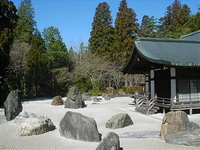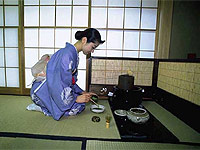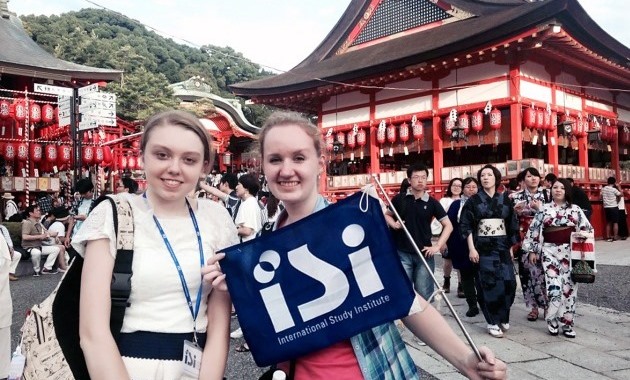Canons of awakening (part 1)
 Despite the rather mild winters, with the exception of the northern island of Hokkaido, the onset of spring in Japan is expected throughout the country. In addition to the usual hormonal process that takes place in the body of every person at the time of the awakening of nature, psychological metamorphosis also occurs in the spring with the Japanese. And the reason for this is the millennial philosophical traditions and religious practices.
Despite the rather mild winters, with the exception of the northern island of Hokkaido, the onset of spring in Japan is expected throughout the country. In addition to the usual hormonal process that takes place in the body of every person at the time of the awakening of nature, psychological metamorphosis also occurs in the spring with the Japanese. And the reason for this is the millennial philosophical traditions and religious practices.
If it were possible to draw an analogy between the seasons and the estates of ancient Japan, I would probably liken summer to hardworking peasants and craftsmen, autumn to sad romantic samurai, leave winter to greedy merchants, and compare the colorful soft spring with a refined palace aristocracy. The New Year in this country, according to the ancient Chinese lunar-solar calendar, was in late February – early March, the time when peasants prepared the fields for rice planting. Soon after, the colorful sakura blossom period began. For the upper classes of ancient and medieval Japan, this is a long-awaited period, because with the advent of spring, fleeting love affairs again blossomed like cherry blossoms and magnificent poems were born. Japanese poetry of that time mainly covered three topics: love, the change of seasons and discussions about the transience of being.
ROOTS OF SAKURA
The canons of awakening Yamato, as Japan was called in ancient times, is a country that has adopted almost everything, from architectural styles to the bureaucratic system, from its neighbors – great China and Korea. Even many traditions that are considered truly Japanese have continental roots. The Japanese try not to reject anything and have the amazing ability to bring their unique element into everything perceived from the outside, thus turning the alien into their own, like an oyster, creating an invaluable pearl from a simple grain of sand.
Everything is subjected to rigorous analysis and rethinking. Amazingly, the Japanese have created almost nothing themselves! But a lot of what they “brought to mind” is considered the best in the world. And of course, in such a delicate sphere as spiritual life, they could not accept a single religious philosophy in its previous form. Buddhism, Taoism and Confucianism in Japan ceased to be the same, but, having fallen on the soil of local Shinto beliefs, they created a unique religious synthesis that has existed for more than a thousand years. Religions are so grown together that some citizens quite officially classify themselves as followers of two religions at once – Buddhism and Shintoism. One way or another, the two main events in the life of a Japanese take place under the canopy of various religions: the wedding is held according to the Shinto rite, the funeral – according to the Buddhist. But what about the most “Japanese” of spring traditions – admiring blossoming sakura? It turns out that the roots of this ritual go to the Celestial Empire. There, admiration for flowers is strictly regulated and has a completely consumer function: to perceive the vital energy of qi from flowers. But since each flower releases it differently, the Chinese look at one or another flower at a moment precisely defined by astrologers, and a certain amount of time. In Japan, admiring the cherry flowers – the khans – is more likely to be aesthetic in nature, although it is not without philosophical background. In the transient flowering of sakura, the temporality of the material world is displayed. Watching the blooming and falling of a pink flower, people reflect on Eternity. Sensitive natures used to make tanka, comparing spring with life, and sakura flowers with itself. Inspired by Buddhist ideas about the transience of being, they accurately express the Japanese’s attitude to the world around him:
No, I will not plant
near the house is a cherry tree –
because with the advent of spring
in the withering colors perhaps
the fading of the world will be revealed to everyone …
(Sosei)
However, in ancient times, only a select few who were not engaged in any daily work could afford such a pleasant pastime. The peasants, on the other hand, simply did not have the opportunity to find time for sakura because of the large amount of work, although they were allowed to enjoy the sight, but not before the sowing was over. Perhaps, in this regard, in the 9th century, Prince Koretaka Sinno laid down such a tank:
Spring cherry flowers
fall – so fall!
It is futile to procrastinate and wait
all the same, the villagers will not come
admire your beauty …




